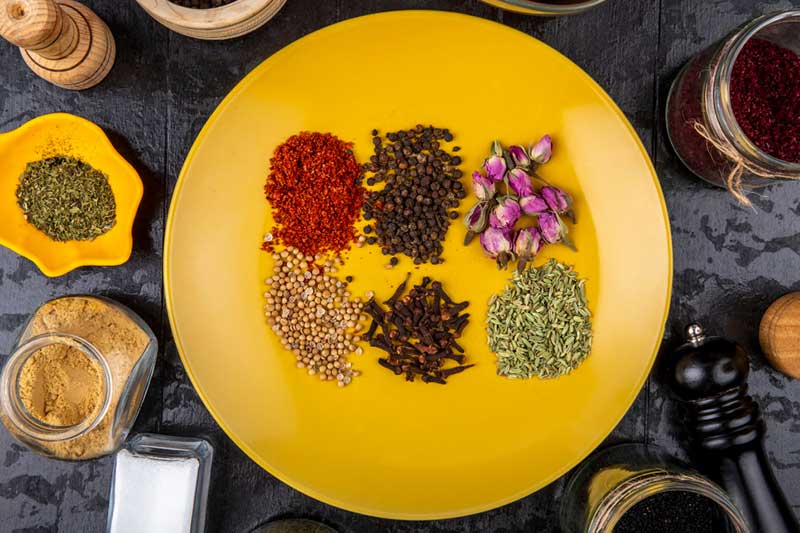
If you’re anything like me, you probably grew up watching someone in your family reach for the “masala box”—that beautiful round spice box that sits at the center of every Indian kitchen. For years, I saw it as nothing more than the heart of cooking, the source of aroma and color that transformed basic lentils into something spectacular.
But somewhere along the way—between recipe testing and a growing interest in wellness—I began to see it for what it truly is: a quiet health booster, hiding in plain sight.
We often chase health trends that come in bottles and fancy packaging. But the truth is, Indian kitchens have always known how to heal from within, one tempering at a time. Here are a few staples from my own masala box that I now see with fresh eyes:
1. Turmeric (Haldi)
This golden powder has earned global superfood status, but we’ve been using it in dals, sabzis, milk, and even face packs for centuries. Its active compound, curcumin, is a powerful anti-inflammatory, antioxidant, and immune booster. I now use haldi not just for flavor, but when I feel the first signs of a sore throat—or after a long flight, when my body needs grounding.
2. Cumin (Jeera)
There’s a reason jeera is often the first spice to hit the hot oil. It aids digestion, reduces bloating, and helps regulate blood sugar. A cup of jeera water in the morning? Game changer. It’s my go-to after heavy meals, especially when I’ve overindulged in fried food or late-night snacking.
3. Fenugreek (Methi Seeds)
Bitter, yes. But brilliant. Methi is known to regulate blood sugar, ease menstrual cramps, and even support lactation. My nani used to soak methi seeds overnight and eat them first thing in the morning. I thought it was strange then—now I do it myself on days when I need to reset my gut or detox gently.
4. Mustard Seeds (Rai)
Often overlooked, mustard seeds are incredibly good for digestion and rich in selenium and magnesium. Their anti-inflammatory properties can help ease joint pain and muscle soreness. I appreciate them even more now in pickles and tempering for dals— not just for the crunch but for the quiet benefits they bring.
5. Clove (Laung)
Tiny but mighty. Laung has natural antiseptic and analgesic properties. I keep a few in my bag during winter—perfect for chewing when my throat acts up or I need to freshen my breath naturally. At home, it finds its way into teas, pulaos, and spice mixes like garam masala.
There’s something magical about realizing that your daily meals don’t just nourish— they heal. Every time I open my spice box now, I see more than just ingredients. I see wisdom, passed down through recipes and rituals, through mothers and markets.
We don’t always need to look far for wellness. Sometimes, it’s right there—in a spoonful of ghee splashed over cumin rice, or the pinch of turmeric stirred into your tadka.
Your masala dabba isn’t just for flavor—it’s your everyday dose of health, comfort, and legacy. And the best part? No prescription needed.